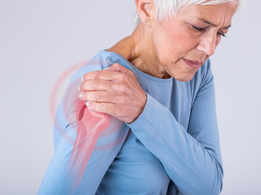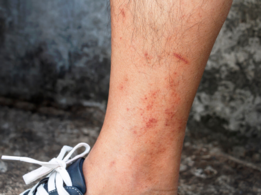Coronavirus symptoms: Aishwarya Rai Bachchan and Aaradhya admitted to hospital a week after testing COVID+. Here are some warning signs that one needs hospitalization
TIMESOFINDIA.COM | Last updated on - Jul 18, 2020, 13:35 ISTShare fbsharetwsharepinshareComments (0)
01/8Coronavirus symptoms: Warning signs that show need for hospitalisation
)

Actress Aishwarya Rai Bachchan and daughter Aaradhya, who were diagnosed with COVID-19 last week were admitted to Nanavati Hospital last night (July 17) for treatment after reports said that they recorded a rise in temperature and complained of breathlessness.
While senior Bachchan and Abhishek have been put in an isolation ward at the Nanavati hospital since news of their infection first came out, Aishwarya and Aaradhya were put in home isolation, since they were largely asymptomatic.
02/8Do not ignore these signs of COVID-19
)

While a lot of people recover well under home quarantine, in some cases the symptoms of SARS-COV2 can quickly progress from mild to worse and require attention. The first week of infection is crucial since this is the time when the viral load peaks. Even in asymptomatic cases, patients need to constantly monitor and look out for symptoms of worsening to determine whether a case has become severe and hospital care is needed.
Here are 4 signs that one needs to be shifted to the hospital in such a scenario:
03/8Experiencing difficulty in breathing
)

Breathlessness and chest pain can be signs of a worsening infection. Coronavirus is a respiratory infection and the virus attacks the healthy cells in the upper tract and the airways, making it difficult to breathe. If your breathing feels laboured, you feel out of breath if you pace about the room or walk up a flight of stairs, these can point to signs of trouble. Connect to a doctor and take immediate action to prevent infection from worsening if such symptoms exist.
04/8A dip in oxygen levels
)

Low oxygen saturation can be a cause of concern in any illness. When a person contracts COVID-19, there are chances that he/she may also develop COVID pneumonia which inflames the air sacs in the lungs and they may get filled with fluid or pus and lead to dip in oxygen levels in the body. While hospitalized patients are constantly monitored for their vitals, in cases of a worsening infection, oxygen levels can often go down pretty quickly without the patient even realizing. Hence, some states started to supply a pulse oximeter for patients under home quarantine to keep a check on their readings. If you run low on oxygen, you may experience difficulty breathing and that is a sign you need medical care.
05/8Delirium, or experiencing confusion of any sort
)

COVID-19 also affects the brain and nervous system in mild ways. A clear change in how you feel, experiencing bouts of confusion, feeling sleepy or sluggish or a brush with delirium is a symptom of the infection worsening. Experts also say that another point of worry is if the patient finds it difficult to carry out simple tasks, or speak a sentence without slurring, immediate care is needed.
06/8Chest pain
)

Any kind of chest pain should never be taken lightly. SARS-COV2 attacks the mucosal linings in the lungs and in many cases, it can result in a tugging pain or discomfort in and around the chest area. COVID+ patients also experience what experts term substernal chest pain, under their breastbone. If your pain gets unbearable or causes any sort of discomfort, it should be evaluated at the earliest.
07/8Blue lips
)

Bluish discolouration to the lips or parts of the face is a sign that oxygen levels are being depleted and critical care is erquired.
08/8What other symptoms does one needs to watch out for?
)

Apart from the above-listed symptom, a worsening of any existing symptom or appearance of new ones (such as loss of sense of smell or taste, diarrhoea) should be reason enough for you to call the emergency services



















































































closecomments
SIGN IN WITH
FacebookGoogleEmail